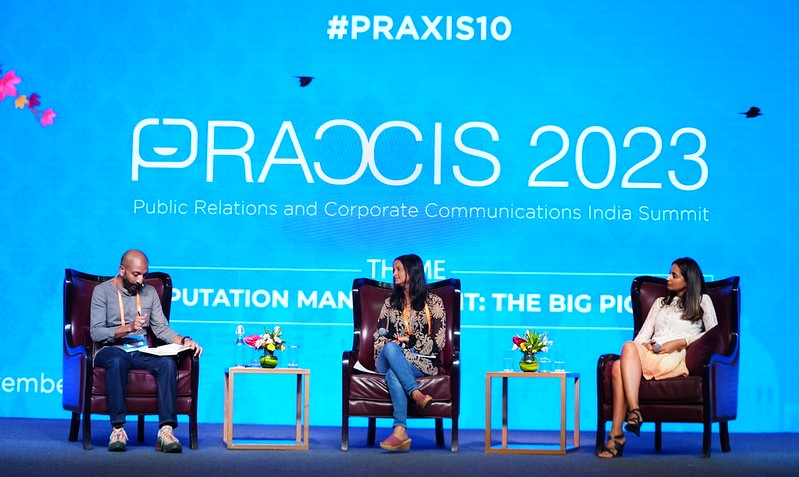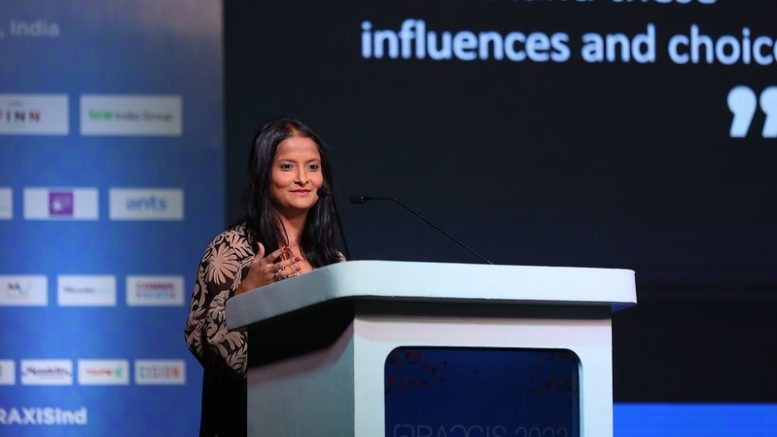In today’s ever-evolving landscape of communication and Public Relations, understanding human behavior has become paramount. Shayoni Lynn, the CEO and Founder of Lynn Group, shed light on the fascinating intersection of behavioral science & communications in her keynote address titled – “Using Behavioral Science to Power Public Relations”. This insightful discussion explored the significance of applied behavioral science in influencing and transforming human behaviors.
Behavioral Science Revealed
To embark on this enlightening journey, Shayoni Lynn began by defining behavioral science as the process of understanding and changing behaviors. Seeking to unveil the underlying conscious, subconscious & unconscious motivations that drive decision-making, behavioral science plays a pivotal role in elucidating the “why” behind human behavior and offers the ability to predict future behavior, which is instrumental in crafting effective communication strategies. “Behavioural science helps unlock why people do what they do. It provides deeper understanding on the conscious, subconscious and unconscious motivations and influences that drive our decision-making,” she described and added – “Behavioural science can help explain why humans behave the way they do – and often predict how they will behave in the future”. Three key drivers of human behavior emerged from Shayoni’s discussion: psychological drivers, sociological drivers, and environmental drivers. Analysing these drivers helps communication professionals gain valuable insights into shaping and directing behaviors towards desired outcomes.
Promoting Positive Behavioral Change
Emphasising Lynn Group’s mission to drive positive behavioral change through education and persuasion rather than manipulation, she said their approach prioritises preserving individual agency, enabling people to make informed decisions that enhance their lives.
Understanding the Subconscious Mind
Delving deep into the mechanics of the subconscious mind, she highlighted how humans primarily rely on automatic processes for daily decision-making. This automaticity is often overlooked, as many individuals tend to perceive their decision-making as rational, logical and efficient. However, acknowledging the role of instinctual, automatic decision-making processes provides a deeper understanding of both individual and audience behaviors.
Continuing on the scientific strain, she illustrated the two sides of the human brain: the Automatic Brain and the Reflective Brain. In the context of problem-solving, Lynn Group conducts in-house primary research to comprehend the motivations, norms, and influences of specific populations. This research informs their communication strategies, aligning with the cognitive processes of their target audience.
Case Study: COVID-19 Vaccination Campaign
Demonstrating the application of behavioral science in communication, Shayoni presented a compelling case study. Lynn Group was tasked with increasing COVID-19 vaccination rates among young people in South East London. Their research uncovered behavioral insights into the target audience:
- Complacency among young individuals about vaccination.
- Distrust in government and institutions due to perceived mishandling of the pandemic.
- Confusion regarding their risk of COVID-19, as previous messaging suggested low risk.
The study identified cognitive biases such as optimism bias, risk perception, status quo bias and social norms that presented barriers to behavioral change.
Audience segmentation was a crucial component of the campaign, ensuring it was representative and relatable to the communities they aimed to reach.
The “Don’t Miss Your Vaccine” Campaign
The “Don’t Miss Your Vaccine” campaign aimed to empower young individuals to make informed choices regarding vaccination. It focused on repositioning the vaccination decision from a perceived threat to personal freedom to a proactive, positive choice. Using a duality approach that combined two images, the campaign adopted visually engaging assets to stand out in the crowded vaccination campaign landscape.
The comprehensive strategy included “paid,” “owned,” and “shared” media approaches to maximise reach and resonance. The campaign toolkit featured the hashtag #DontMissYourVaccine, which played a pivotal role in amplifying campaign content across partner organisations.
Positive Public Health Outcomes
Lynn Group’s approach yielded remarkable results, with a 77.8% increase in vaccination rates among 18-29-year-olds and a 0.8% increase for the 30-39 age group compared to baseline statistics. The success of the campaign demonstrated the profound impact of behavioral science in driving positive behavioral change for public health.
Combatting Disinformation
Finally, she touched upon the menace of disinformation. Recognising the significant threat posed by disinformation, she stressed the importance of adopting a proactive approach to counter it. This approach is essential in safeguarding public health and promoting accurate information. “The treat from disinformation is huge. We need to think how we adopt a proactive lens,” she said.
In an era where communication strategies must adapt to the complexities of human behavior, Shayoni Lynn’s keynote shed light on the pivotal role of behavioral science in crafting impactful, ethical, and informed communication campaigns. It serves as a testament to the power of understanding why people behave the way they do and using this knowledge to create a positive impact on society.

In a Fireside Chat with Arun Sudhaman, Provoke Media who enquired – what about behavioural change as far as clients go? “It’s a methodology, a frame of mind. Clients come to Lynn, know our proposition. I say it is challenging!”
What about from time or investment perspective? “It needs a high level of talent and the result is ten-fold,” she exclaimed. About misinformation and people taking huge liberties to retain power, she noted, “That’s right. We live in a vastly polarised society. It’s not just politicians. It is there to create chaos. And we have a duty to protect our society”.
The views and opinions published here belong to the author and do not necessarily reflect the views and opinions of the publisher.






Be the first to comment on "Unlocking the Power of Behavioral Science in Communication: A Deep Dive"